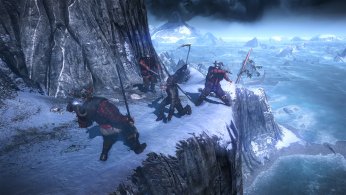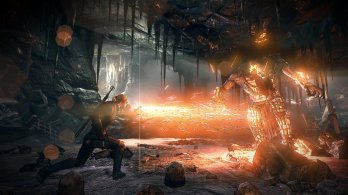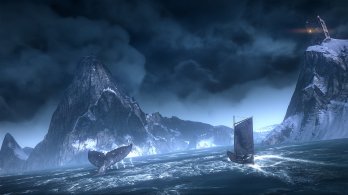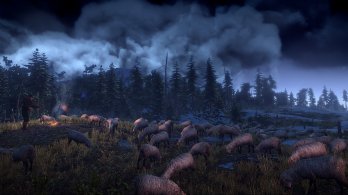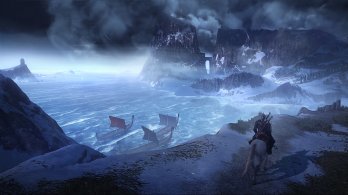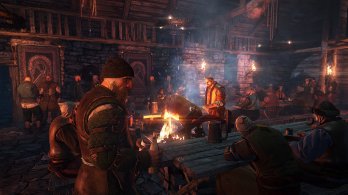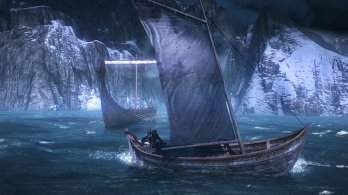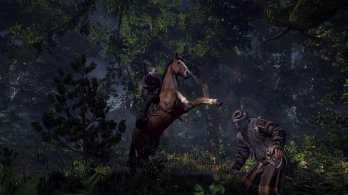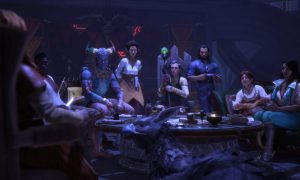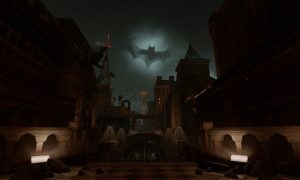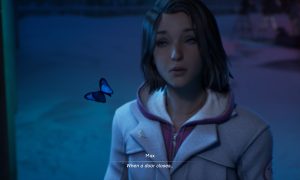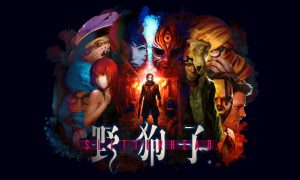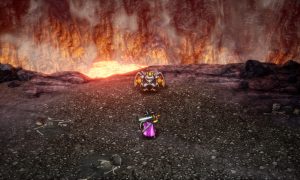 Our first appointment for E3 was one of my personal most-anticipated titles of this next generation – The Witcher 3: Wild Hunt. The conclusion to the adventures of Geralt of Rivia, this title boasts 100 hours of gameplay with half of that being the main storyline. With 7 endings, the game also sports replayability on top of that massive number. If The Witcher 2 is any indication these won’t be small shifts to build those endings either, but purpose-driven polar opposite changes from the other paths.
Our first appointment for E3 was one of my personal most-anticipated titles of this next generation – The Witcher 3: Wild Hunt. The conclusion to the adventures of Geralt of Rivia, this title boasts 100 hours of gameplay with half of that being the main storyline. With 7 endings, the game also sports replayability on top of that massive number. If The Witcher 2 is any indication these won’t be small shifts to build those endings either, but purpose-driven polar opposite changes from the other paths.
Witcher developer CD Projekt RED kicked off our presentation with a quick reminder of who Geralt of Rivia is – a mutated monster hunter based on the books by Andrzej Sapkowski’s novels who is neither a knight in shining armor, nor a regular sellsword, but a complex man with his own motivations and allegiances. We start our demo with an incredible cinematic that gives us an idea of what it is to be a Witcher. While we wait for that to be released (one can hope – it’s pretty awesome), here’s a quick video on the making of the game:
The team at CD Projekt RED are building a world immersed in chaos. The Empire of Nilfgaard is ravaging through the Northern Kingdom while The Wild Hunt (a group of ghastly spectral warriors) begin to maraud through the land. The Kings and Lords that Geralt once served are dead and gone, victims of their own foolish hubris. The Witcher 3 focuses on Geralt’s personal story and his battle against these vicious nightmares. Our demo driver assures us that you don’t have to know the previous two titles to enjoy The Witcher 3 as the world has completely changed.
Our gameplay presentation begins with a burning village being besieged by men in heavy spiked armor that we can only assume are from The Empire of Nilfgaard. As they execute the citizens of this small village, a small group escapes into the hills only to see a far more frightening sight – a floating airship in the distance. They are now pinned between the invading army and The Wild Hunt.
Two weeks later we pick up with Geralt. He is a little older, sporting a scruffy beard, and on horseback headed to Crach an Craite to meet with his friend, the Jarl. The island he is on, Ard Skellig, is larger than the entirety of The Witcher 2, and this is only one of 7 islands. In the Witcher 3, the storytelling is the most important part to the game, though it still contains the great mature gameplay with consequences for your actions that we’ve come to expect from the series.
 Our friend ushers us from the stables to talk about the village of Dalvik – the place we saw burned to the ground at the beginning of the game. Bjorn, the survivor, has headed to live with his brother in the nearby city of Fayrlund. We will need to speak with him to learn of the Wild hunt. The Jarl beseeches us to stay for a meal, drink, and stories, but our purpose is time sensitive. The NPC dialogue is greatly polished thanks to the fantastic upgrade in graphical fidelity (each character now has more than 40 bones in their face to express their feelings more accurately, in addition to the new texture system), but this extends even further to the world. As Geralt descends the cliff towards the harbor we can see incredible draw distance, boats milling about the harbor, fishermen prepping nets and processing their catch, and other various activities. It is clear that everyone has their own agenda, but this is reinforced by more information for the team. Since the game features a full day/night cycle and dynamic weather, people will react to the weather by staying inside when it rains, go hunting on clearer days, and otherwise carry on with their own lives without you.
Our friend ushers us from the stables to talk about the village of Dalvik – the place we saw burned to the ground at the beginning of the game. Bjorn, the survivor, has headed to live with his brother in the nearby city of Fayrlund. We will need to speak with him to learn of the Wild hunt. The Jarl beseeches us to stay for a meal, drink, and stories, but our purpose is time sensitive. The NPC dialogue is greatly polished thanks to the fantastic upgrade in graphical fidelity (each character now has more than 40 bones in their face to express their feelings more accurately, in addition to the new texture system), but this extends even further to the world. As Geralt descends the cliff towards the harbor we can see incredible draw distance, boats milling about the harbor, fishermen prepping nets and processing their catch, and other various activities. It is clear that everyone has their own agenda, but this is reinforced by more information for the team. Since the game features a full day/night cycle and dynamic weather, people will react to the weather by staying inside when it rains, go hunting on clearer days, and otherwise carry on with their own lives without you.
The World of The Witcher 3 is shockingly 35 times bigger than the one in The Witcher 2. It isn’t just large, but packed with story, side quests, and even random encounters. The viking-like city has a huge community alive with plants, people, merchants, and the like. Blacksmithing and alchemy is still in the game, but there is also a new economy system. Bear pelt might be cheaper in the mountains, fish might be cheaper on the coast, but both will be more expensive in the desert – hunting now has more purpose. Before we take a deeper look at the world, take a look at the debut gameplay trailer that was unveiled at E3 2013:
There are no artificial barriers in the world, nor is there any loading unless you use the new fast-travel system. Horses, sailboats, climbing, running, and more will all carry you to any destination you can see in the distance. In our demo we see Geralt jumping into a boat, which makes for a great backdrop to demonstrate the dynamic weather system. As a storm descends on our little boat, our demo driver mentions that storms can capsize the boat. Since we are in the frozen North, the water is far too cold to swim in and would immediately sap your stamina, pulling you into the deep.
Back on land we head up into the mountains to travel to Fayrlund to talk to Bjorn. Spotting a lake with a little building on the coast as well as some towers in the mountains in the background we see two different paths towards side quests. We check out the small cabin and find a group of bandits trying to break into the structure. Using our signs we blow the three of them off their feet, blasting one with fire, and engaging the others with swords. The combat engine is greatly enhanced and looks more fluid and dynamic. Finishing off one of the minions, we find out that the men we killed were local bandits – this is something that might have consequences later. Currently there isn’t an ‘interesting item’ indicator on the map (though we are a long way from launch), instead asking players to simply discover things in a natural and organic way.
In the distance we see another point of interest – a ruined castle on the hillside. Exploring the ruins we see a fresh camp, but a fiend has invaded a camp. The creature looks like a mutant elk grown many times normal size. He’s very dangerous and charges us with his massive horns and vicious teeth. He isn’t a boss but simply a random epic enemy. Because he focuses on pinning you into the walls, we lure him out into the world to use our spells and swords to engage him.
 The new combat system combines speed and precision of an action title with RPG elements. You have full control over Geralts moves like rolling away, dodging, parrying, and more. Using a special attack the beast attempts to hypnotize the Witcher, darkening our vision making it very hard to target and engage him. Carefully using our magic and spells we force the beast off. Geralt comments that he’s run off to lick his wounds and we should chase him to his lair and track him down. We’ll do this later, but for now we head back to the storyline. Killing him gives you his head which can be turned in for a reward or a trophy, but in this series inaction has as much consequence as action. One thing I did notice (and confirmed) is that the quicktime events of the previous games have been removed.
The new combat system combines speed and precision of an action title with RPG elements. You have full control over Geralts moves like rolling away, dodging, parrying, and more. Using a special attack the beast attempts to hypnotize the Witcher, darkening our vision making it very hard to target and engage him. Carefully using our magic and spells we force the beast off. Geralt comments that he’s run off to lick his wounds and we should chase him to his lair and track him down. We’ll do this later, but for now we head back to the storyline. Killing him gives you his head which can be turned in for a reward or a trophy, but in this series inaction has as much consequence as action. One thing I did notice (and confirmed) is that the quicktime events of the previous games have been removed.
Geralt is rather tired after the fight – we take a moment to meditate and build a campfire to recover. This is a great chance to see the incredible day and night dynamic effects. This cycle will affect gameplay, with examples being stronger werewolves at night, or more dangerous creatures in the forest than usual.
Making our way to the village we find Bjorn of Dalvik. A sullen man, he tells us reluctantly about The Wild Hunt and their attack on his village. Nobody wants to believe the story, but we just might. We ask him for directions on where to find The Hunt from a trio of conversation options. The Hunt is headed East towards another city, but he also mentions that his daughter is also missing – we could take this as a side mission if we are inclined. Before we can seek The Hunt we are presented with a side quest – a local villager named Armulf has been killed, and the people believe it is because the Woodland Spirit has been offended. As the village argues on what to do about the Woodland Spirit, we offer our services as a Witcher…for a price. The creature wants revenge and but there is argument between two villagers. One wants to preserve the old ways and offer sacrifice, but the younger man wants to destroy the creature. We decide to track the monster and figure out what to do when we know more.
 Using our Witcher senses we can now spot clues in the world. Heading into a forest that is whipping with wind, we find additional investigation points that tell us that the creature has incredible strength telling us that when we fight it we shouldn’t block – it’ll be ineffective. Finding tracks and other fresh kills we gather additional information on the creature and add it to our bestiary. There are over 80 unique creatures you can hunt in the game, so this sort of information gathering is vital to effectively taking them down.
Using our Witcher senses we can now spot clues in the world. Heading into a forest that is whipping with wind, we find additional investigation points that tell us that the creature has incredible strength telling us that when we fight it we shouldn’t block – it’ll be ineffective. Finding tracks and other fresh kills we gather additional information on the creature and add it to our bestiary. There are over 80 unique creatures you can hunt in the game, so this sort of information gathering is vital to effectively taking them down.
Entering the forest at night time we see more wolves emboldened by the darkness into attacking Geralt. They hide and skulk about, waiting for numbers and opportunity. Signs and swords takes care of them quickly. We continue to try to track this beast- a creature called a Leshen. We open the beastiary to study this creature, telling us a little bit about its vitality, how much damage it can dish, armor capabilities, vulnerability to silver, regeneration, size, sounds associated (cawing of crows), special abilities (Marks victims it draws from to be reborn, destroy its totems to lure it out) and much more. In the monster list we can also see Ice Giants, Pesta, Noonwraith, and more. Using quicktravel we head back to the village to talk to either Harald or Sven to decide to either worship and appease it as the older folks would like, or destroy it as Sven and his younger friends desire.
Talking to Sven, he offers that -because the village will never believe the word of an outsider, if we find the marked one (he believes it’s Harald) he’ll “handle the rest”. We use our Witcher senses to find out that it is in fact not Harald as he suggested, but in fact a woman in the village named Hilde. Carrying this information to Sven, we leave him with the decision to either kill the marked one or exile her. It isn’t just Geralt making tough decisions this time.
Heading into the forest we hear the sound of crows – these should lead us to the leshen totems that we need to destroy to reduce its power. The leshen, to defend the totems, takes control of the wolves in the area and tries to stop us, entangling our feet with roots. With all three destroyed we find the lesher. The beast is flanked by wolves, and it can can disappear into a flock of crows, appearing at will. The beast looks like he is made of wood, claws, horns, and totems from the forest. Engaging him as he appears, our feet are constantly speared by roots raised by the beast. Using a fire sign and our blades, we dispatch the leshen. Travelling back to the village we find a horrible scene – they’ve killed the marked villager Hilde. Cash in hand, we remind them that they’ve become murderers, even with the lesher removed. The team gives us a look at something that would normally happen some time later – Geralt thinking back at this whole sordid affair. In a flashback it is revealed that the day after the beast was killed the village was raided by their neighbors. We’ve made a big decision, people died, and the villagers only survived just 3 months longer than the monster they so feared.
 The environmentals in The Witcher 3 are unlike anything I’ve seen before. I cannot imagine the amount of work to dynamically generate something so incredible, but literally every square inch of this world seems to be alive. When the wind is rough, this becomes even more apparent. Our demo was being done on a Windows 7 machine with an Xbox 360 controller, so the game is being purpose built to be multiplatform, easy to control, and complex enough to be the most engaging action RPG to date.
The environmentals in The Witcher 3 are unlike anything I’ve seen before. I cannot imagine the amount of work to dynamically generate something so incredible, but literally every square inch of this world seems to be alive. When the wind is rough, this becomes even more apparent. Our demo was being done on a Windows 7 machine with an Xbox 360 controller, so the game is being purpose built to be multiplatform, easy to control, and complex enough to be the most engaging action RPG to date.
Before we closed our demonstration we got to see a quick look at some of the huge variety of environments we will get to see in the game. Forests, villages, dark and dangerous forests, stone castles and keeps, lush green foliage as far as the eyes can see, highlands, and much more. The Witcher 3: Wild Hunt defines the next generation and easily wins our award for Best Action/RPG of E3 2013, Best Graphics of E3 2013, AND Best PC Game of E3 2013.
To go along with the fantastic preview we also got a quick fact sheet that had information outside of the presentation. Here they are in no particular order just to add to the wealth of information above:
The Witcher 3 is vast and continuous, yet diverse, with each of its lands distinguishable by a unique feel inspired by different sources and cultural references.
- No Man’s Land: A sparsely populated, war-ravaged territory, based on Slavic mythology. Murky swamps and dark primeval forests cover this land, where monster lurk behind every tree and no one can be sure whether they will see another sunrise. Its fields stripped bare by passing armies, No Man’s Land is a place of anarchy, where might makes right and gold buys life.
- Skellige: a wind-swept and rugged archipelago, based on Nordic and Celtic legends and sagas. In these isles, inhabited by proud and nobile people, warrior seek fame by facing legendary monsters, druids guard nature’s secrets, and bards sign of heroes past in torch-lit halls. Stubbornly independent, the Skelligers are rigging their longboats, and sharpening their spears, ready to lay down their lives defending against the inevitable Nilfgaard invasion.
- Novigrad and its surrounds: a port city inspired by medieval Amsterdam. In this grand city, as rich and colorful as it is corrupt, players witness the persecution of mages by an all-powerful cult, while at the same time dealing with underworld figures poised to profit from the ongoing world war.
Left to itself, the world continues living:
- Predators hunt their prey, villages defend themselves against monsters, lovers meet by moonlight.
- Communities react to temperature changes and other phenomena, seeking shelter when it rains or warmth when the temperature drops; they migrate to fulfill their needs or flee threats, while merchant caravans fill the roads and fishermen sail in search of the best catch.
- REDengine 3 incorporates location ambience and expanded dynamic lighting, which enables a realistic, highly-detailed day and night cycles as well as diverse weather conditions – player can observe an approaching storm before experiencing its might as they navigate a rough stretch of sea.
Players can:
- unlock new blocking moves, attacks, and evasions
- discover ways to stun foes, ignite them and control their minds with enhanced Witcher Signs.
- poison their blades, set traps, and blow their enemies to bits with bombs.
Dynamic, fluid and rooted in traditional RPG systems:
- The number of attacks parries and other combat moves have been greatly increased and rendered fluid with 96 new action sequences (compared to 20 in The Witcher 2)
- Three different sets of movement animations let Geralt adjust his stance to match the dangers he faces
- Players enjoy complete control of Geralt in combat as there are no QTEs or scripted timing attacks
- A new camera system, superior even to that utilized in the Xbox 360 version of The Witcher 2, shows fights in all their glory while keeping the focus on what the player needs to see.
- Geralt’s character development visibility affects his behavior in combat: obtaining a Swordsman skill might increase attack animation speed, while a Mage ability could turn the Igni Sign into a torrent of blue flame.
Use your brain, they’ll use theirs:
- Each of the 80 monsters Geralt can encounter has its own habitat, strengths and weaknesses.
- Improved crowd AI means enemies communicate with each other in combat, coordinating their efforts to surround Geralt or deploy combo attacks.
- Monsters and other foes do not scale with the player: beasts that crush players with a single swipe at the outset become sword fodder by game’s end.
- Enemy morale shapes their actions: opponents flee or fight more cautiously when scared, attack recklessly when desperate, and beg for mercy on their knees when defeat is inevitable.
- The environment is a factor in combat, and Geralt can use it to his advantage: he might destroy a hive to unleash an angry swarm of hornets on a foe, or cast the Aard Sign to bury a group of thugs beneath a toppled stack of barrels.
Choose your path, hone your skills, craft your fortune, brew your destiny:
- Players can combine skills from three specialization paths – Swordsman, Mage, and Alchemist – to shape hybrid characters.
- Each ability gained has a visible and visceral impact on combat: players who unlock a precision enhancement on the Swordsman tree might then see their blows slice through opponents’ jugulars with deadly regularity.
- Under the expanded Sign casting system, each of Geralt’s five Signs has two different modes, broadening the creative use of magic in combat.
- Alchemy is highly intuitive, with potions used as easily as skills: players drink their brews before combat, then activate them when needed.
- Players can concoct an expanded array of potions, bombs, and blade oils, including special mixtures for use against specific monster types.
- Greatly expanded Crafting allows players to create items like armor elements and weapons, significantly adding to Geralt’s deadly combat arsenal.
Breakthrough in visual realism – drawing on the newest available graphics technology, the new, state-of-the-art renderer:
- produces fully dynamic light and shadow effects throughout the game world, generating superior atmosphere and ambiance,
- generates detailed, realistic locations throughout a significant increase in polygon count,
- provides a deep, role-playing experience through visually attractive film-like presentation.
Ron Burke is the Editor in Chief for Gaming Trend. Currently living in Fort Worth, Texas, Ron is an old-school gamer who enjoys CRPGs, action/adventure, platformers, music games, and has recently gotten into tabletop gaming.
Ron is also a fourth degree black belt, with a Master's rank in Matsumura Seito Shōrin-ryū, Moo Duk Kwan Tang Soo Do, Universal Tang Soo Do Alliance, and International Tang Soo Do Federation. He also holds ranks in several other styles in his search to be a well-rounded fighter.
Ron has been married to Gaming Trend Editor, Laura Burke, for 28 years. They have three dogs - Pazuzu (Irish Terrier), Atë, and Calliope (both Australian Kelpie/Pit Bull mixes), and an Axolotl named Dagon!

See below for our list of partners and affiliates:



